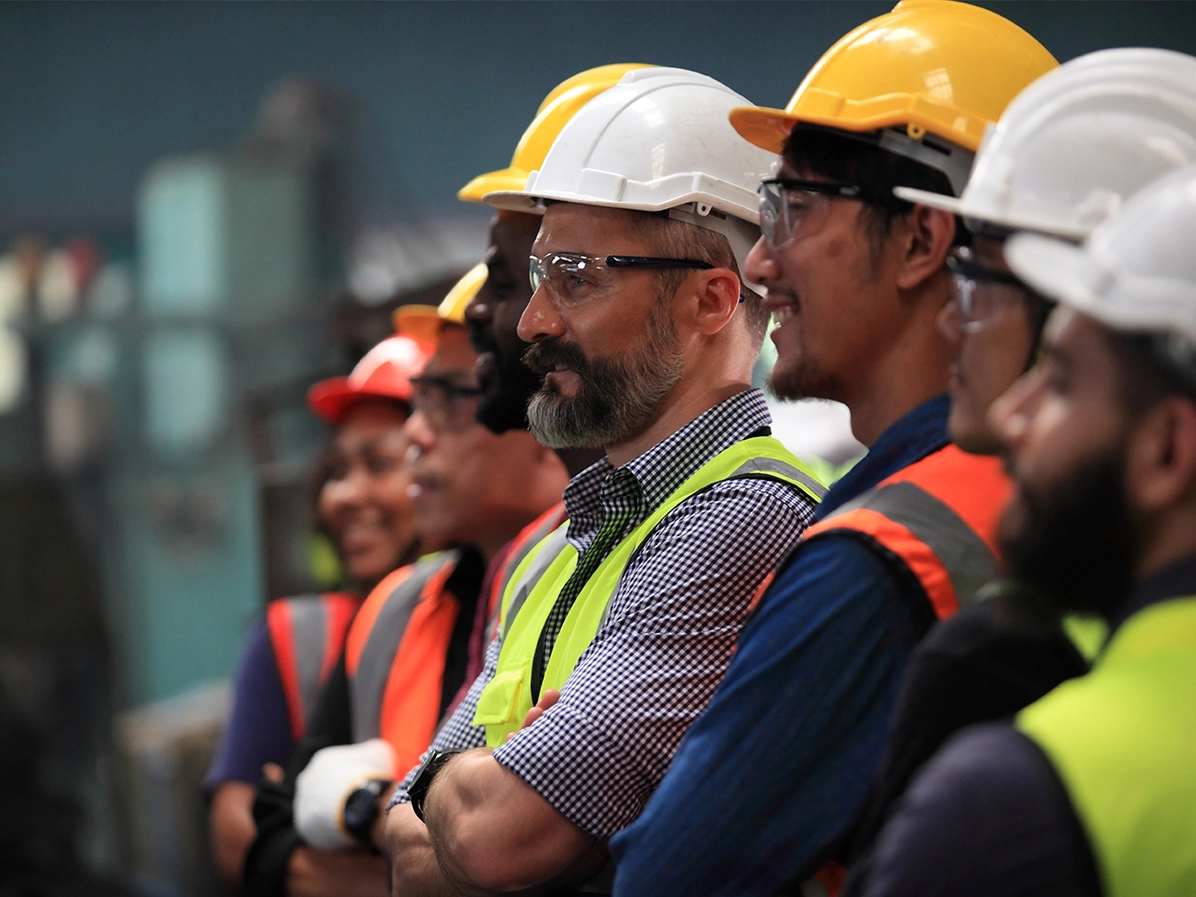Contents
Making Safety More Than a Number One Priority: A Core Value Approach
31 January 2025
Businesses often pride themselves on their core values, such as transparency, honesty, integrity and accountability. These company values act as guiding principles and fundamental beliefs that shape an entire business, enabling organizations to better themselves and work toward a common goal. However, many organizations commonly leave out a key core value: health and safety.
Everywhere you look, there are examples of businesses not setting the right standards, such as the horrifying story of a front-line supervisor killed by a machine due to negligent health and safety standards within the company.
This is just one example, but unfortunately many more exist. That's why health and safety must be an integral part of any business, right down to its core values.
Do You Consider Safety a Priority?
While many companies often claim safety to be important, it is not always reflected in their core business values. In today’s rapidly changing business environment, companies are focused on maximizing profits, keeping up with the latest technological advancements in their field and maintaining customer relationships. This often means that health and safety considerations become an afterthought, seen as a distraction from other organizational goals. In worst-case scenarios, this attitude leads to severe workplace accidents, many of which are completely avoidable.
The case of the frontline supervisor referenced above demonstrates the importance of embedding safe operations within your organization. In a recent news release published by the Occupational Safety and Health Association (OSHA), OSHA Area Office Director Joel Batiz reported the company “put production schedules and profit ahead of employee safety” by ignoring the required machine standards and procedures necessary to prevent injury. Unfortunately, this accident could have been prevented if the right safety measures, such as conducting a thorough risk assessment and utilizing EHS compliance software, had been put in place and followed.
This incident is not unique. Many businesses fall into the same trap by prioritizing speed and profit over safety. The key to preventing such tragedies is not just to set safety policies but to embed them into the company’s culture.
Safety as a Core Business Value
Adopting safety as a core value, rather than treating it a priority, ensures it remains integrated in every decision and does not compete with other initiatives. Any priority can shift as new challenges arise, such as financial pressures, technological advancements or market demands. Unfortunately, companies often pull focus away from safety at the very moments when employees need it most.
Core values, however, are enduring. They inform how decisions are made, guide behavior and shape culture across an organization. When safety becomes a core value, it transcends being a task on a checklist and becomes a constant, non-negotiable aspect of the business's DNA.
But how can businesses adopt a commitment to safety in their day-to-day operations? The answer lies in rethinking your company’s relationship with workplace health and safety.
Reframe Your View of Workplace Safety
One way companies are changing the way they think about safety is by channeling a "safety always" mindset into their company values. While you might be more familiar with the phrase "safety first," adopting "safety always" as a core business value encourages organizations to integrate safety into every aspect of their operations. This ensures it becomes a continuous initiative rather than a one-time consideration.
Another way to reframe the mindset around workplace safety is by viewing it not as an expense, but as an investment in the future. Many leaders overlook that workplace safety isn’t a cost center — it’s a driver for business success. While it’s easy to focus on the upfront costs of safety management systems, the real value lies in the long-term benefits. Studies have shown that for every one dollar invested in safety software, an organization can save between two to six dollars in the long run.
Ultimately, safety should not be an afterthought — it’s an integral part of business success. There’s no room to be complacent; horrific incidents might seem unlikely, but they’re more common than you think. You can’t assume that leadership and frontline staff will automatically put the right steps in place to prevent incidents. Incorporating safety as a core business values provides a way to spearhead workplace safety initiatives and keep employee well-being in the forefront of everyone's minds.
Make health and safety a top priority today! Visit our solutions page below and see how we can help inspire your organization to make positive change.

RELATED BLOGS

The Ultimate Guide to Safety Incentive Programs
14 June 2022 - Team Evotix
The ideal for any business is that everybody, and everything, is working in unison, moving toward the same goal. In reality, that isn’t always the case.

How Can Health And Safety Technology Be A Positive Influence On Your Business?
7 June 2022 - Team Evotix
For Health and Safety Managers, decreasing the number of safety incidents in the workplace while keeping employees healthy and safe is a constant concern. One major barrier to improving this often..

Understanding the Consequences of Workplace Incidents
4 March 2024 - Team Evotix
The health and safety of an organization does not exist in isolation from the rest of the business. In fact, the condition of health and safety within an organization has a traceable impact on the..
